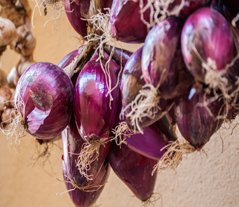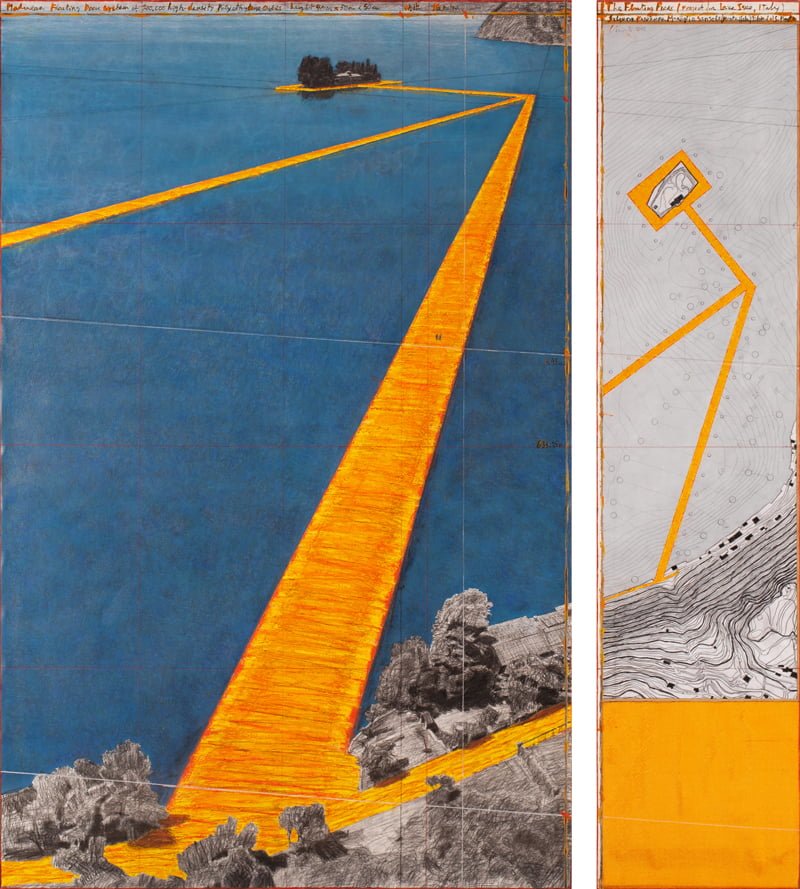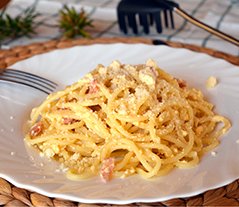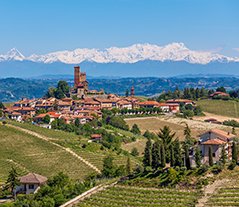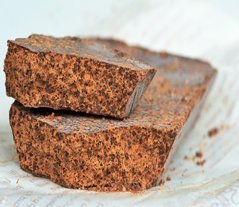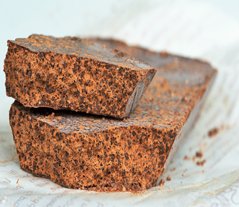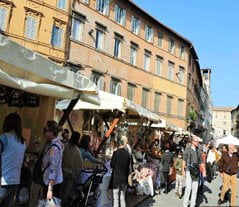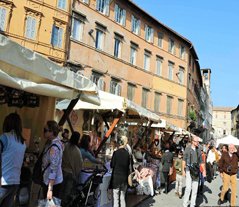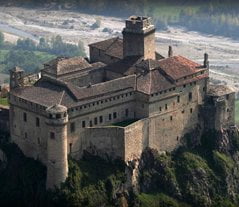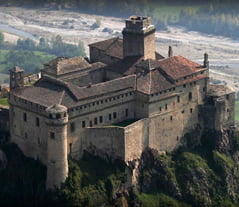When travelling to Liguria, in addition to the beautiful sea and warm sunshine, visitors will surely take notice of a ubiquitous treat enjoyed by locals as breakfast, an appetizer, or a snack throughout the day: focaccia. Though many varieties exist in Italy, the most traditional and delicious iteration of focaccia has its home in Liguria. Focaccia genovese, a golden flatbread with a fluffy center and a crisp crust, is considered to be the simplest variety of focaccia, but also the richest. Authentic focaccia genovese is one to two centimeters thick, is only seasoned with coarse salt and a generous amount of extra-virgin olive oil, and is covered with characteristic holes that serve as pockets to trap the delicious oil.
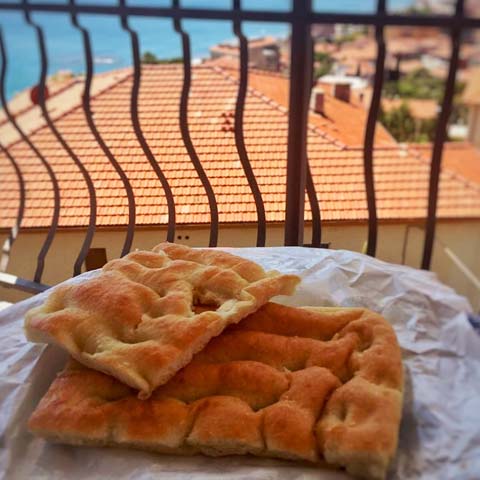 The historical origins of focaccia are quite ancient. The Phoenicians, Carthaginians, and Greeks all used barley, rye, or millet flour to bake flatbreads over flames similar to the modern process of baking focaccia. The word focaccia itself derives from the Latin word focus, which means “hearth” and “fireplace”. In ancient Rome, focaccia was considered to be such a rich delicacy that is was often offered as a gift to the gods. During the Renaissance, focaccia was enjoyed with wine and other treats as part of wedding celebrations. Legend has it that since these celebrations occurred in church, focaccia eventually became a popular treat during funerals too. This tradition was quickly put to an end by a local bishop as it was deemed too joyous for such somber occasions. In addition, the portable, delicious flatbread was typically considered the food of travelers and fishermen up until modern times.
The historical origins of focaccia are quite ancient. The Phoenicians, Carthaginians, and Greeks all used barley, rye, or millet flour to bake flatbreads over flames similar to the modern process of baking focaccia. The word focaccia itself derives from the Latin word focus, which means “hearth” and “fireplace”. In ancient Rome, focaccia was considered to be such a rich delicacy that is was often offered as a gift to the gods. During the Renaissance, focaccia was enjoyed with wine and other treats as part of wedding celebrations. Legend has it that since these celebrations occurred in church, focaccia eventually became a popular treat during funerals too. This tradition was quickly put to an end by a local bishop as it was deemed too joyous for such somber occasions. In addition, the portable, delicious flatbread was typically considered the food of travelers and fishermen up until modern times.
Though several regions in Italy produce their own variations of focaccia, the Liguria region is considered to be the traditional home of this tasty bread. Here, focaccia is accompanied by coffee for a typical Genoese breakfast or by a small glass of wine for a midmorning snack. In addition to the focaccia from Genoa, the cheese-filled focaccia di Recco is quite popular as well. This simple focaccia composed of very thin unleavened crust filled with fresh stracchino cheese that melts as the focaccia bakes in a wood oven. This type of focaccia is such a local delicacy that it was granted IGP status by the European Union, meaning that authentic focaccia di Recco can only be made in the town of Recco.
Traditionally, focaccia made in northern Italy was usually brushed with lard or butter during the baking process, while focaccia made in Liguria and in southern Italy was, and continues to be, brushed with extra-virgin olive oil. The exact date of the origin of focaccia genovese is not known, but the oldest historical document that mentions this delicious Ligurian flatbread dates back to the year 1229. Focaccia di Recco, on the other hand, dates back to the 12th century and it is believed that its origin coincided with the Crusades.
Two additional varieties of focaccia are also quite popular in other parts of Italy. The first originates from the province of Bari and can be enjoyed throughout the Puglia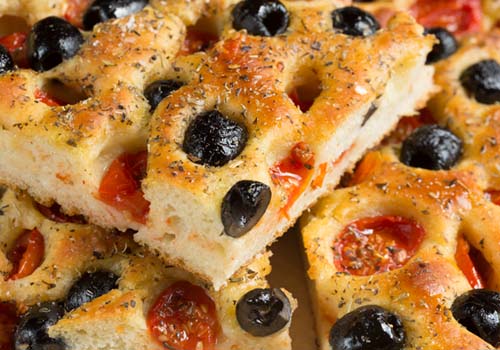 region. This variety, focaccia barese, is quite unique for two reasons: boiled potatoes are added to the dough to make the focaccia even softer and it is topped with fresh cherry tomatoes. The second type is found in the province of Messina on the island of Sicily. Known as focaccia messinese, this variety has a thick, soft base that is topped with endive, diced tomatoes, anchovies, and cheese (usually tuma, though mozzarella can also be used). Other types of focaccia found in Italy are topped with a variety of other ingredients including rosemary, sage, onions, olives, salumi, cheeses, and other herbs and vegetables.
region. This variety, focaccia barese, is quite unique for two reasons: boiled potatoes are added to the dough to make the focaccia even softer and it is topped with fresh cherry tomatoes. The second type is found in the province of Messina on the island of Sicily. Known as focaccia messinese, this variety has a thick, soft base that is topped with endive, diced tomatoes, anchovies, and cheese (usually tuma, though mozzarella can also be used). Other types of focaccia found in Italy are topped with a variety of other ingredients including rosemary, sage, onions, olives, salumi, cheeses, and other herbs and vegetables.
Though focaccia genovese may be considered simple compared the other varieties listed above, it is the high-quality ingredients and expert preparation that render focaccia genovese so incomparably delicious. Authentic focaccia genovese can only be made with finely ground type 00 flour, extra-virgin olive oil, and coarse salt. The key to focaccia’s unique taste rests in the baking process, which occurs in a wood-oven and brings all of the exquisite ingredients together. Truly, the best slice of focaccia is the one that has just been pulled out of the oven—nothing quite compares.
So the next time you find yourself in Liguria, be sure to enjoy some authentic focaccia genovese made with extra-virgin olive oil. We hope your slice is fresh out of the oven and perfectly golden!

